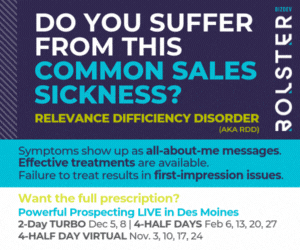Survival of the smallest

As recently as 15 years ago, the parents of a baby born at 24 weeks’ gestation and weighing about as much as an average T-bone steak or four sticks of butter held little hope for their child’s survival. And if by some miracle the infant did survive, the parents were plagued by another distressing worry: Would the child thrive, or face lifelong physical and mental health problems?
Kris Jones, a registered nurse and supervisor in Blank Children’s Hospital’s Neonatal Intensive Care Unit, remembers those bleak prognoses, but even they were an improvement. When she began working at Blank 27 years ago, babies born at 27 or 28 weeks’ gestation were almost certain to die within days of the birth. Today, a baby born that far into the pregnancy is still considered premature, but robust in comparison to the 24-week infant, whose survival rate has improved to between 50 percent and 60 percent.
Dr. Samir Alabsi, director of Blank’s NICU, can’t point to a single breakthrough technology that changed the message he and his colleagues deliver to new parents from one of despair to one of hope. “There’s been no major thing,” he said, “but multiple daily changes.”
The March of Dimes says about 12 percent of babies born in the United States each year are premature – which is defined at 37 weeks’ gestation or earlier. A full-term pregnancy is 40 weeks. Of those babies, 84 percent are born between 32 and 36 weeks of gestation, and about 6 percent are born at less than 28 weeks. As recently as the 1960s, about half of all premature babies born in the United States died.
Neonatology is a relatively young field that has grown rapidly since 1963, when the death of President Kennedy’s second son, Patrick Bouvier Kennedy, underscored the need for research into treatments to save premature babies. The Kennedy baby, who weighed about 4 pounds at birth and died of respiratory distress syndrome, might have lived had doctors known then what they discovered later in drug trials: that a synthetic surfactant would prevent the baby’s lungs from collapsing. The drug, which occurs naturally in the body but is deficient in premature babies, was approved for use in 1990.
Neonatology professionals at Blank are not only avid readers of the research, but also participants in the drug trials that isolate best practices. “We don’t have to fly by the seat of our pants” in the treatment of premature babies, said Cecelia Kirvin, the chief nursing officer at Blank’s NICU.
The research also debunks treatments that appear to be effective in preventing respiratory distress, for example, but can contribute to other problems later on. For years, doctors delivered high concentrations of oxygen to premature babies, believing that it would prevent their lungs from collapsing. The treatment worked, but researchers later found that 60 percent of the premature babies given the concentrated oxygen later suffered from retinopathy of prematurity (ROP), a condition that leads to blindness, so the practice was discontinued.
The Blank NICU is currently involved in three ongoing research projects, including one that contributes data to the highly respected Vermont Oxford Network, a non-profit voluntary collaboration of about 250 NICU centers throughout the world working to improve the quality of care given to premature babies.
“We are learning from studies and trial and error,” Alabsi said. “We’re always adjusting our practices as we get data from multiple sources.”
Blank also has set a new standard nationally for the environment in which care is given to preemies and other babies who are in the NICU because of severe medical problems or complications from birth. Years ago, music blared from speakers and babies were bathed in stark white light in the ward setting. In a 2001 remodeling at Blank, 30 private rooms were created to allow the medical staff to adjust the environment to one that is best suited for the baby’s individual needs. For example, a baby with high levels of bilirubin – a condition that can damage the brain – require more direct light than a baby who isn’t born jaundiced.
Columbia University followed Blank’s lead and many other large medical centers are revamping their NICUs to allow babies to be cared for in an environment tailored to meet their individual needs.
The Blank renovation also allowed for the addition of rooms for parents, showers and laundry facilities. “To have a premature baby is a big issue, and it puts the whole family in a critical situation,” Kirvin said. “Sometimes, when a baby is born sick, Mom’s sick, too. This places the family all together.”
That approach leads to better informed parents when the baby is finally discharged and allowed to go home. “They come in here with zero knowledge,” Alabsi said, “but when they leave, they most likely will have all the information available about their baby’s disease.”






